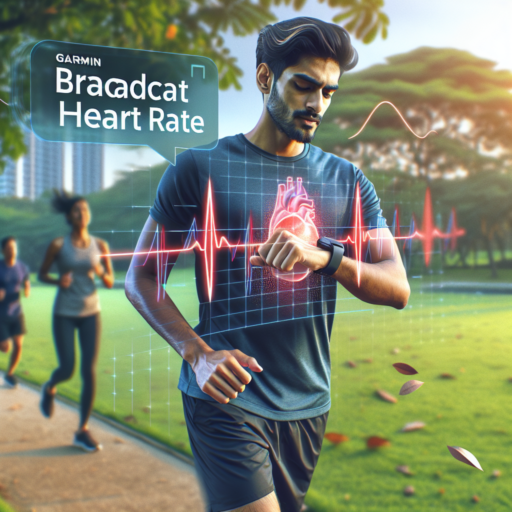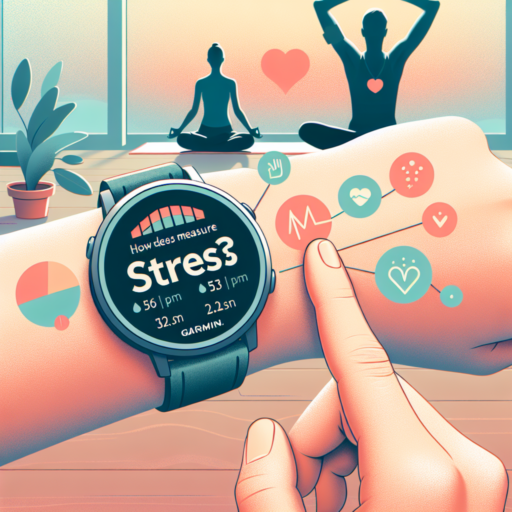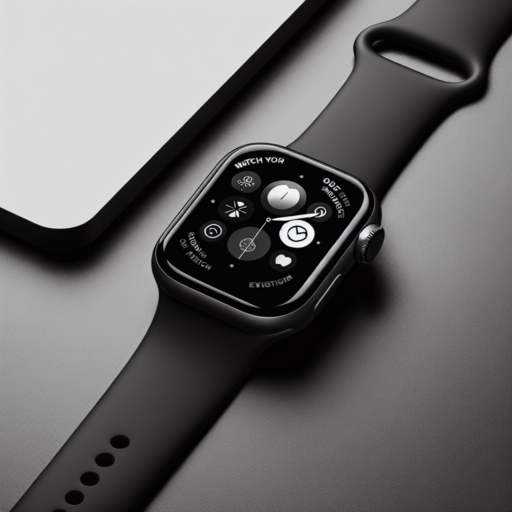Introduction to Garmin Broadcast Heart Rate Feature
Welcome to the innovative world of Garmin and its pioneering feature, the Garmin Broadcast Heart Rate functionality. This integral part of Garmin’s ecosystem represents a leap forward in how athletes and fitness enthusiasts can monitor and share their heart rate data in real-time. Garmin’s dedication to enhancing user experience through technological advances shines brightly through this feature, designed to provide accurate, live heart rate metrics to enhance training and performance monitoring.
The Garmin Broadcast Heart Rate feature taps into the power of Bluetooth and ANT+ technology, allowing users to seamlessly transmit their heart rate data to Garmin devices and compatible gym equipment. This capability not only enhances the precision of workout data but also allows for a more integrated and interactive training experience. Whether you’re cycling, running on a treadmill, or engaging in a high-intensity interval training (HIIT) session, the ability to broadcast your heart rate in real time opens up a new dimension in fitness tracking and personal health management.
Understanding the fundamentals of the Garmin Broadcast Heart Rate feature is crucial for maximizing its benefits. It’s designed with the user in mind, offering a straightforward setup and connectivity process. This ensures that all fitness enthusiasts, regardless of their technical aptitude, can easily integrate this feature into their daily training regimen. The convenience and accessibility of this technology represent Garmin’s commitment to innovation, user satisfaction, and promoting healthier, more active lifestyles.
How Does Garmin Broadcast Heart Rate Work?
Garmin devices are renowned for their precision and versatile functionality in tracking health and fitness data. At the core of these capabilities is the Garmin Broadcast Heart Rate feature, leveraging advanced technology to share your heart rate data in real-time. This revolutionary feature transforms your Garmin wearable into a heart rate monitor, broadcasting your heart rate to other compatible Garmin devices and apps.
The functionality begins with the device’s optical heart rate sensor, which uses light to gauge the blood flow through your wrist. This process, known as photoplethysmography (PPG), allows the device to calculate heart rate data accurately. Once your heart rate is detected, the Garmin device then uses ANT+ wireless technology to broadcast this information. This seamless communication protocol ensures that your heart rate data can be shared with other Garmin devices, such as bike computers and fitness watches, or even with third-party apps that support ANT+ connectivity.
To utilize the Broadcast Heart Rate feature, users simply need to access the heart rate widget on their Garmin device, navigate to the settings, and select the option to start broadcasting. This initiates the real-time sharing of heart rate data, which can be incredibly beneficial for athletes who want to monitor their heart rate on multiple devices simultaneously or for individuals who wish to share their fitness data during group workouts.
Benefits of Using Garmin to Broadcast Your Heart Rate
Utilizing Garmin devices to broadcast your heart rate presents a multitude of advantages for athletes and fitness enthusiasts alike. One of the primary benefits is the precise monitoring of your cardiovascular performance in real time. This allows for immediate adjustments in your workout intensity, ensuring that you are always training within your optimal heart rate zones. This level of precision and adaptability contributes significantly to the efficiency and effectiveness of your fitness regimen.
Another significant advantage is the seamless integration with other fitness platforms and devices. Garmin’s compatibility extends to a wide range of equipment and apps, enabling you to share your heart rate data across various platforms for a more comprehensive view of your health and fitness progress. This interconnectivity enhances your ability to track, analyze, and set goals based on accurate and extensive data, offering a holistic approach to fitness and well-being.
Furthermore, broadcasting your heart rate with a Garmin device encourages a deeper understanding of your body’s responses to different physical activities. By consistently monitoring your heart rate, you gain insights into your body’s efficiency in utilizing oxygen, the intensity levels that yield the best results, and how quickly your heart rate returns to normal after exertion. This knowledge not only aids in optimizing your training routines but also in identifying potential health concerns before they escalate.
Step-by-Step Guide to Setting Up Your Garmin Device for Heart Rate Broadcasting
Setting up your Garmin device to broadcast your heart rate can enhance your fitness tracking experience significantly. This guide simplifies the process, ensuring a seamless setup. By broadcasting your heart rate, you can pair your Garmin with compatible devices and apps, allowing for more comprehensive monitoring. Whether you’re a cycling enthusiast or a dedicated runner, this feature lets you keep a closer watch on your cardiovascular health and efforts during workouts.
Initial Preparation
Before proceeding with the heart rate broadcasting setup, ensure your Garmin device is fully charged and updated to the latest firmware. This preliminary step is crucial for a smooth setup process and to avoid any compatibility issues with other connected devices. A firmware update can also introduce new features or improvements to heart rate broadcasting.
Enabling Heart Rate Broadcasting on Your Garmin
Start by navigating to the heart rate widget on your Garmin device. This can typically be found under the ‘My Day’ view or the widgets list, depending on your model. Once there, look for the settings option to access the heart rate broadcasting mode. Activating this mode will make your device visible to others, allowing compatible devices to receive your heart rate data. Remember, while in broadcasting mode, your Garmin device will not record heart rate data for your activity. Therefore, plan accordingly if you wish to maintain personal heart rate records in addition to broadcasting.
Compatibility with your training equipment or apps enhances the utility of your Garmin device immensely. By following these steps carefully, setting up your device for heart rate broadcasting becomes a straightforward task. It’s a game-changer for athletes looking to integrate real-time heart rate data with their training ecosystem, providing valuable insights into their physical state and performance.
Compatible Garmin Devices for Heart Rate Broadcasting
When it comes to monitoring your heart rate, Garmin devices stand out for their accuracy and reliability. The ability to broadcast your heart rate data in real-time to other devices not only enhances your training efficiency but also allows for a more integrated fitness experience. In this exploration, we’ll delve into the range of Garmin devices that support heart rate broadcasting, enabling athletes, fitness enthusiasts, and health-conscious individuals to make informed choices.
Top-Tier Wearables with Heart Rate Broadcasting
The Garmin ecosystem includes several high-end wearables renowned for their heart rate broadcasting capabilities. Among these, the Garmin Forerunner series and the Fenix lineup are particularly noteworthy. These devices cater to the needs of serious athletes by providing detailed heart rate data, which can be shared with compatible gym equipment, smartphones, and even outdoor navigation devices. This seamless connectivity ensures that your heart rate data is always at your fingertips, ready to guide your training decisions.
Everyday Fitness Trackers
Besides the advanced sports watches, Garmin also offers fitness trackers designed for everyday use that support heart rate broadcasting. Models such as the Vivosmart and Vivoactive series combine the convenience of a fitness tracker with the sophisticated heart rate monitoring technology that Garmin is known for. These devices are perfect for those who wish to keep an eye on their heart rate during daily activities and workouts, making heart health management both simple and effective.
Understanding the broad spectrum of Garmin devices capable of heart rate broadcasting empowers users to select a product that best fits their lifestyle and fitness goals. Whether you’re a professional athlete requiring detailed data for training optimization or someone interested in tracking their heart health more closely, Garmin offers a solution tailored to your needs. Exploring the specific features and compatibility of each device will further enhance your ability to monitor and improve your heart health through technology.
Integrating Garmin Broadcast Heart Rate with Other Fitness Apps
The integration of Garmin’s Broadcast Heart Rate feature with other fitness applications opens up a plethora of possibilities for athletes and fitness enthusiasts seeking a comprehensive analysis of their workouts. By connecting Garmin devices to popular fitness apps, users can now seamlessly share and monitor their heart rate data in real time. This integration not only enhances the accuracy of workout metrics but also allows for a more personalized exercise experience.
Compatibility and Connectivity are key factors when integrating Garmin Broadcast Heart Rate with other fitness apps. Most leading fitness platforms now support this integration, offering a straightforward process to link your Garmin device. By ensuring your device’s firmware is up to date and following the specific connecting instructions provided by the app, you can unlock detailed heart rate analytics and customized training sessions tailored to your cardiovascular metrics.
Moreover, leveraging Garmin’s heart rate data across different fitness apps can provide insights into your training intensity, recovery needs, and overall cardiovascular health. This data, enriched with the advanced metrics from other fitness applications, can guide users in fine-tuning their training regimes, avoiding overtraining, and reaching their fitness goals more effectively.
Understanding the Accuracy of Garmin Broadcast Heart Rate
Garmin devices have been at the forefront of integrating advanced technology into wearable fitness trackers and smartwatches. Among the plethora of features they offer, the ability to broadcast heart rate data in real-time stands out as particularly useful for those looking to monitor their cardiovascular health and performance closely. However, understanding the accuracy of Garmin’s broadcast heart rate feature is crucial for athletes, fitness enthusiasts, and health-conscious individuals alike.
The heart rate data provided by Garmin devices is collected through optical heart rate technology. This method employs LEDs that send light into the skin, allowing the device to measure the quantity of blood flowing through your veins. The accuracy of this technology is generally high during steady-state exercises such as running or cycling. However, it’s important to note that factors like skin tone, hair density, and the device’s fit on your wrist can influence the precision of heart rate readings.
To enhance the accuracy of heart rate data, Garmin recommends that users wear their device above the wrist bone, ensuring a snug fit that’s not too tight. This placement minimizes external light interference and movement, which can significantly affect accuracy. Additionally, Garmin has continuously updated its algorithms and sensor capabilities to improve the performance of its heart rate monitoring feature over time. These updates aim to provide users with more reliable and accurate heart rate data, regardless of the physical activity they are engaging in.
Key Factors Affecting Heart Rate Accuracy
- Physical Activities: The type and intensity of physical activity can impact the accuracy of heart rate data. Steady-state activities tend to provide more accurate readings.
- Wrist Placement: Proper device placement is crucial. The device should be worn above the wrist bone for optimal accuracy.
- Skin and Fit Factors: Skin tone, hair density, and snugness of fit can all influence the precision of optical heart rate measurements.
FAQs: Common Questions About Garmin’s Heart Rate Broadcast
Sure, let’s delve into the frequently asked questions surrounding Garmin’s heart rate broadcast feature, ensuring clarity and helping users make the most of their Garmin devices.
How do I enable heart rate broadcast on my Garmin device?
To enable heart rate broadcast on your Garmin device, you typically need to navigate through the settings menu. First, access the main menu, then select ‘Settings’, followed by ‘Heart Rate Monitor’. Within this menu, you’ll find an option to ‘Broadcast Heart Rate’. Toggle this feature on to begin broadcasting your heart rate to paired devices. It’s important to ensure your Garmin device is snugly strapped and properly positioned for accurate heart rate readings.
Can I broadcast my heart rate to third-party apps?
Yes, the Garmin heart rate broadcast feature is compatible with several third-party apps. Once the heart rate broadcast mode is activated, open your preferred third-party fitness app (e.g., Zwift, Strava) and look for the option to connect to a heart rate monitor. Your Garmin device should appear as an available source. Select your device to start sharing your heart rate data. However, compatibility might vary, so check the particular app’s compatibility list or support for detailed instructions.
Why is my heart rate not broadcasting?
If you’re experiencing issues with broadcasting your heart rate, there are a few troubleshooting steps you can take. Ensure that your Garmin device is fully charged and properly fitted. Check that the heart rate broadcast feature is turned on in the device settings. Additionally, confirm that there are no obstructions, like sweat or dirt, between your device and your skin, as they can interfere with the heart rate sensor’s accuracy. If the problem persists, try restarting your Garmin device and the receiving device (e.g., smartphone, tablet) to reset the connection.
No se han encontrado productos.
Tips and Tricks to Maximizing Your Use of Garmin Heart Rate Broadcast
When it comes to enhancing your training sessions and overall fitness journey, understanding and effectively utilizing the Garmin Heart Rate Broadcast feature can be a game-changer. This innovative function allows users to share their real-time heart rate data with other devices, providing a comprehensive overview of their cardio health. Below are some essential tips and tricks to ensure you are making the most out of your Garmin device’s heart rate broadcasting capabilities.
Optimize Device Placement for Accurate Readings
The first step to maximizing the use of your Garmin Heart Rate Broadcast is to ensure the device is placed correctly. The heart rate sensor should have firm skin contact without being too tight, as this could affect blood flow and consequently, the accuracy of data recorded. Wearing the device on a clean, non-hairy part of your wrist or using a chest strap can significantly improve the quality of the readings.
Pairing with Compatible Devices
To fully leverage the benefits of heart rate broadcasting, pairing your Garmin device with compatible gadgets is crucial. This can include smartphones, bike computers, or even gym equipment. Ensuring a stable connection not only allows you to monitor your heart rate on multiple platforms but also integrates your data for a comprehensive health analysis across different training environments.
Engage in Varied Workouts
Diversity in your workout routine is not only beneficial for your physical health but also enhances the utilization of your heart rate broadcast feature. Engaging in different types of exercises—from high-intensity interval training (HIIT) to steady-state cardio—can provide varied heart rate data. This diverse information helps in creating a more accurate profile of your cardiovascular health over time.
By adhering to these tips and tricks, you can significantly enhance your understanding and application of the Garmin Heart Rate Broadcast, leading to more informed and efficacious training sessions.
Real-World Benefits: Why Athletes Choose Garmin for Heart Rate Broadcasting
In the competitive world of sports and fitness, precision in training and monitoring is not just a luxury; it’s a necessity. Garmin has emerged as a frontrunner in offering athletes a crucial tool for enhancing their training regimes – the capacity for heart rate broadcasting. This feature not only furthers the sophistication of workout analytics but also enriches athletes’ understanding and management of their physical performance.
One of the key factors attracting elite athletes to Garmin’s heart rate broadcasting capability is its real-time accuracy. Being able to receive instantaneous heart rate data allows for immediate adjustments during training sessions or competitions. Whether it’s about pacing oneself in a marathon or optimizing intervals in high-intensity training, Garmin-enabled precision ensures athletes are always training at their intended intensity levels, maximizing the efficacy of each session.
Moreover, Garmin’s seamless integration with other devices stands out as an invaluable benefit for those looking to craft a comprehensive training ecosystem. Athletes can broadcast their heart rate data to multiple devices, such as bikes, treadmills, or even online training platforms. This interoperability not only simplifies the technical setup for athletes but also amplifies the utility of every piece of data collected, empowering athletes to make more informed decisions about their training and recovery processes.




